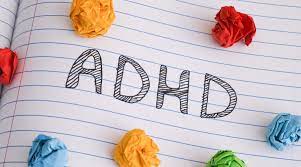The neurodevelopmental disorder known as Attention Deficit Hyperactivity Disorder (ADHD) is typified by impulsivity, hyperactivity, and inattention. Although it affects people of all ages, children are typically diagnosed with it first. Medications are a major component of treatment plans for ADHD, even though behavioral therapy and lifestyle modifications are also common. The creation of ADHD-specific drugs has come a long way over the years, with the goals of increasing effectiveness, lowering side effects, and improving long-term results for patients. This article will examine the most recent cutting-edge drugs that are revolutionizing the treatment of ADHD.
Comprehending Conventional ADHD Drugs:
It’s important to comprehend the conventional therapies for ADHD before exploring novel drug options. Pharmacotherapy for ADHD has long relied heavily on stimulant drugs such as amphetamine (Adderall) and methylphenidate (Ritalin). These drugs function by raising dopamine and norepinephrine levels in the brain, which helps people with ADHD become more focused, attentive, and able to regulate their impulses.
While many patients find success with stimulants, there are some disadvantages to consider, including the possibility of misuse, side effects like appetite loss and insomnia, and potential long-term consequences on growth and development, especially in children. Furthermore, some individuals might not react well to stimulant drugs or can have unbearable side effects, which would call for alternate forms of care.
Novel Non-Stimulant Pharmaceuticals:
Pharma companies have begun creating non-stimulant ADHD drugs after realizing the need for alternate treatments. One such drug is the selective norepinephrine reuptake inhibitor (SNRI) atomoxetine (Strattera). Because it doesn’t directly alter dopamine levels like stimulants do, atomoxetine is a good alternative for people who are intolerant to stimulant drugs or have a history of substance abuse.
Guanfacine (Intuniv), another non-stimulant drug, has drawn interest. Guanfacine, which was once prescribed to treat hypertension, has been shown to be useful in lowering the symptoms of ADHD, including impulsivity and hyperactivity. It enhances executive function and attention management by acting on alpha-2 adrenergic receptors in the prefrontal cortex.
For patients who do not respond well to stimulants or would rather not take them because of potential for abuse or negative side effects, these non-stimulant drugs provide an alternative. They give medical professionals more possibilities to customize treatment regimens to meet the needs of specific patients.
Prolonged-Release Mixtures:
Several daily dosages are required for standard ADHD drugs, which can be bothersome and have an impact on adherence, particularly in younger patients. This problem is solved by extended-release formulations, which distribute the drug gradually over a longer time frame, decreasing the need for frequent doses and offering more reliable symptom control all day long.
Both stimulant and non-stimulant drugs come in extended-release forms. For instance, doctors frequently recommend extended-release methylphenidate (Concerta) and extended-release amphetamine (Adderall XR) because of their ease of use and ability to effectively manage symptoms all day long.
The options accessible to patients with ADHD have been further expanded by the development of novel formulations including transdermal patches and long-acting injectables, which are the result of breakthroughs in drug delivery technology.
Innovative Mechanisms of Action:
In addition to the conventional neurotransmitter-based methods, scientists are looking into new ways that ADHD drugs work. Modulating glutamate, the brain’s principal excitatory neurotransmitter, is one promising approach. The etiology of ADHD has been linked to glutamate dysregulation, and drugs that target glutamatergic pathways may be able to treat the cognitive impairments linked to the illness.
As an illustration,
The drug dasotraline is a triple reuptake inhibitor, which means it inhibits the reuptake of serotonin, norepinephrine, and dopamine. Dasotraline attempts to give complete symptom treatment for ADHD sufferers while maybe reducing adverse effects linked to single-target drugs by modifying these neurotransmitters.
Medication that targets the endocannabinoid system,
Which is essential for controlling neurotransmitter signaling and synaptic plasticity, is one of the other cutting-edge strategies. Preliminary research indicates that endocannabinoid system modulation may offer novel therapeutic options for managing ADHD, while research in this field is still in its early stages.
Genetic testing and personalized medicine:
Treatment decisions are becoming more and more influenced by personalized medicine techniques as our knowledge of the genetic roots of ADHD expands. Genetic testing enables medical professionals to customize treatment regimens based on a patient’s genetic predispositions by identifying genetic variants that may affect a person’s response to particular medications.
For instance, some genetic variants may have an effect on how stimulant drugs are metabolized, which could change both their effectiveness and tolerability. Healthcare professionals can optimize medicine selection and dosage by integrating genetic testing into clinical practice, which improves treatment outcomes and lowers the risk of side effects.
Obstacles and Prospective Paths:
Although new drugs have the potential to improve ADHD management, there are still a number of obstacles to overcome. One issue is the need for additional study to fully comprehend the long-term efficacy and safety of these drugs, especially in populations that are more susceptible, including children and teenagers.
Furthermore, the availability of novel drugs to individuals who could benefit from them may be restricted by variables like cost and insurance coverage. Ensuring that all people with ADHD have access to the best treatment options will depend on addressing these hurdles.
Future developments in treatment appear promising due to ongoing investigations into the underlying neurobiology of ADHD and the creation of targeted medicines. Researchers and medical professionals can improve the quality of life and results for people with ADHD by being creative and working together.
In conclusion,
Advances in pharmaceutical development and individualized treatment modalities are driving a rapid evolution in the field of ADHD therapy. For those with ADHD, there are now more options than ever before, ranging from non-stimulant drugs to extended-release formulations and innovative methods of action. We can keep improving results and transforming the lives of persons impacted by this condition by utilizing these developments and tackling lingering issues.




